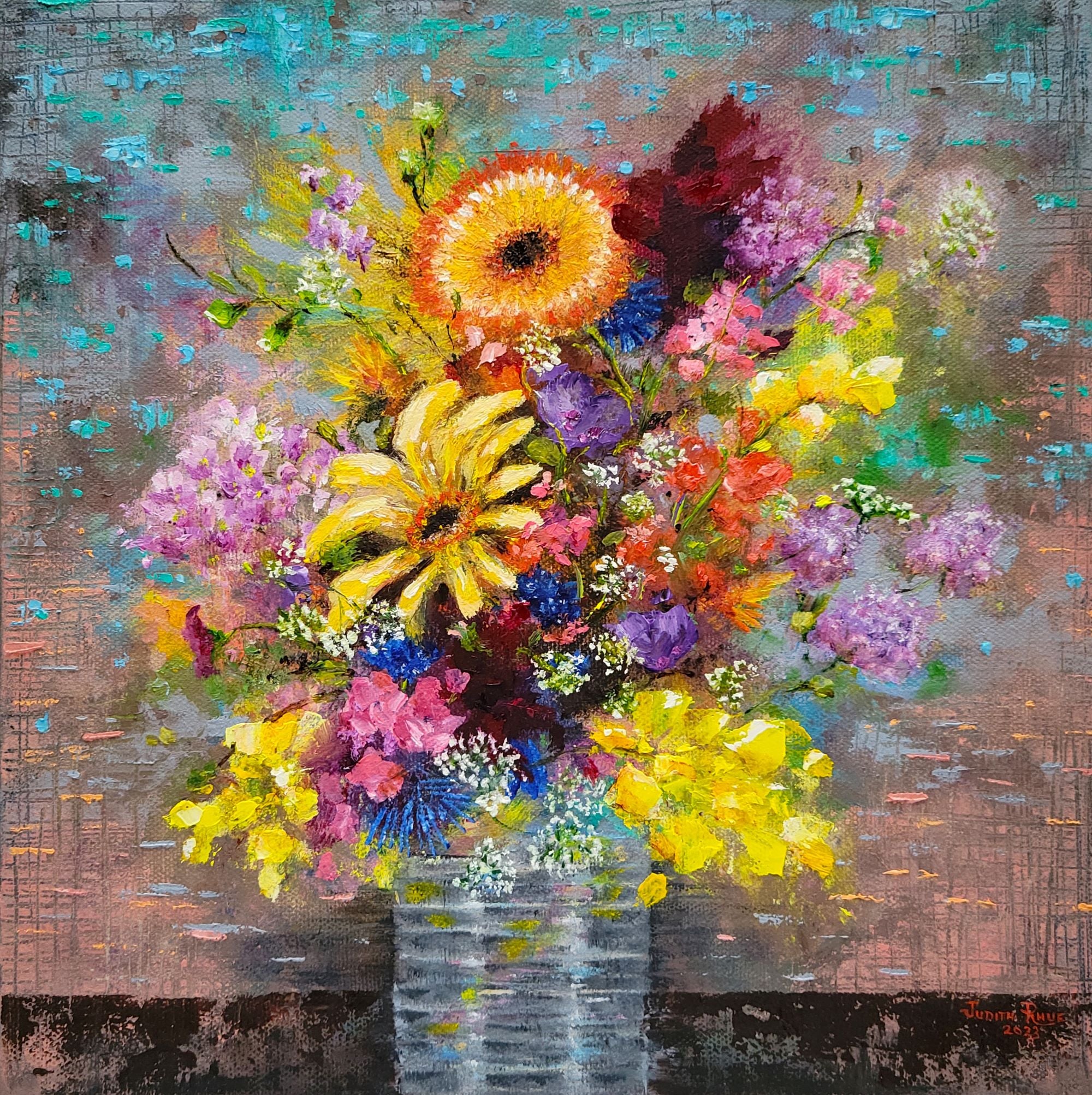Rare Collectible Oil Paintings for Sale
The Benefits of Buying Oil Paints: Why They Are a Timeless Financial investment
The benefits of purchasing oil paintings expand beyond plain appearances. These art work carry historic value and cultural worth, making them worthwhile enhancements to any type of collection. Their unique textures and methods add to an appealing aesthetic experience. Moreover, recognized musicians typically see their job value in time, offering a possible financial benefit - oil paintings for sale. As one checks out the complex factors for spending in oil paintings, the deeper ramifications of such a choice become significantly obvious
The Visual Allure of Oil Paints
The appeal of oil paints depends on their abundant structures and vibrant colors, which can change any type of room right into an interesting environment. These art work have a depth that mesmerizes viewers, attracting them right into the intricacies of the brushstrokes and the interplay of light and darkness. The glossy coating of oil paint boosts the aesthetic experience, offering life to scenes and subjects in a means that various other tools usually can not accomplish. In addition, the variety of styles-- from classic to contemporary-- enables a varied option that can match any decoration. The emotional resonance conveyed through color options and strategies includes a layer of connection between the observer and the artwork, making oil paintings not just decorative things, but effective expressions of imaginative vision.
Historic Relevance and Social Worth
Oil paints serve as necessary links to an imaginative heritage, showcasing strategies and designs that have actually progressed over centuries. They envelop social expressions and identities, showing the values and narratives of their time. By acquiring these jobs, people add to the conservation of history and the recognition of diverse cultural legacies.
Creative Heritage Conservation
While many might overlook the significance of creative heritage, acquiring oil paints plays a vital duty in preserving historic and social stories. These art work act as visual paperwork of their time, capturing the essence of social worths, customs, and historic events. By acquiring oil paints, collection agencies add to the guarding of social traditions, guaranteeing that future generations can find out and appreciate from these artistic expressions. Each piece reflects the one-of-a-kind story of its designer and the context in which it was made. Additionally, the continued admiration and display of oil paintings in numerous settings assist to foster an understanding of varied imaginative activities, enhancing the cultural landscape. Therefore, purchasing oil paintings is not merely a financial decision but an act of cultural stewardship.
Cultural Expression and Identification
Art offers as an effective tool for cultural expression and identification, mirroring the diverse narratives that shape societies. Oil paints, in particular, catch the essence of social heritage, showing historic contexts and sociopolitical environments. Each brushstroke shares feelings and stories one-of-a-kind to certain customs, allowing audiences to engage with the artist's cultural history. This connection fosters a feeling of comprehending and belonging among different communities. Furthermore, oil paints often act as aesthetic documents of cultural advancement, showcasing shifts in identity gradually. The financial investment in these art work not only supports musicians however also maintains social heritages, making them considerable properties for enthusiasts. Ultimately, oil paints improve one's recognition for the details of human experience and the abundant tapestry of social identity.
Appreciation in Worth In Time

The admiration of oil paintings over time is affected by numerous factors, including historical worth fads that show transforming preferences and social value. In addition, the credibility of the artist plays an essential function in determining the art work's market worth, usually raising as the musician gains recognition. Market demand fluctuations can even more influence prices, making oil paintings a potentially profitable financial investment for collectors.
Historic Value Trends
As enthusiasts seek to purchase tangible properties, the historical value fads of oil paintings reveal an engaging story of appreciation gradually. Historically, oil paintings have demonstrated a constant upward trajectory in value, specifically for works by well established artists. Economic cycles and market demand have affected these patterns, with durations of increased passion frequently resulting in considerable cost rises. Public auction documents often highlight the remarkable returns achieved by iconic pieces, additionally reinforcing the notion of oil paints as sensible lasting investments. In addition, cultural movements and changes in collector choices have periodically spurred unexpected appreciation, disclosing that the art market, while rather unpredictable, typically prefers top quality oil paints. Comprehending these historic trends can lead financiers in making educated decisions.
Artist Credibility Influence
While the reputation of an artist plays an essential duty in the recognition of oil paintings, it is essential to identify that this effect can vary substantially based upon a number of aspects. Established musicians, specifically those with a considerable historic or social impact, have a tendency to see their jobs appreciate more quickly. Conversely, lesser-known or emerging musicians may not experience the exact same level of demand, affecting their art work's worth. Furthermore, the artist's capacity to create a constant body of work and preserve relevance in the art world can affect lasting recognition. Collection agencies often look for jobs from artists that are recognized by reputable galleries and organizations, which can additionally enhance the worth of an oil paint gradually, making artist online reputation a vital consideration in financial investment decisions.

Market Need Fluctuations
Just how do market need variations influence the admiration of oil paintings gradually? The value of oil paintings is inherently linked to market demand, which can differ based upon economic conditions, trends, and collection agencies' preferences. In times of economic prosperity, demand often increases, bring about raised costs as more buyers get in the market. Conversely, during financial declines, need might dwindle, causing worths to stagnate and even decrease. Furthermore, the appeal of certain musicians can shift, impacting their work's charm. Eventually, recognizing market demand is important for financiers, as well-managed collections can appreciate considerably with time, mirroring both the ability of the musician and the broader market characteristics. This interaction underscores the significance of critical acquiring in oil painting financial investments.
Special Textures and Techniques
Oil paintings mesmerize customers with their distinctive textures and techniques, showcasing the musician's proficiency over the tool. The thick application of paint, called impasto, develops a three-dimensional effect, inviting touch and enhancing aesthetic deepness. Artists often employ numerous brush strokes, layering, and polishing techniques to accomplish elaborate details and luminous shades. This versatility permits rich contrasts and refined changes, making each art work uniquely meaningful. Furthermore, the sluggish drying out time of oil paint enables musicians to mix colors effortlessly, leading to smooth slopes and dynamic shades. These techniques contribute to the painting's overall character, making it an engaging prime focus. Each oil paint serves as an indication of the imagination and ability fundamental in typical creative methods.
Flexibility in Home Design
The special structures and techniques of oil paints not just showcase imaginative skill but also boost their convenience in home style. These art work can effortlessly enhance numerous indoor styles, from modern minimal to typical elegance. Oil paintings act as focal factors, drawing interest and sparking conversation amongst guests. Their abundant shades and deepness can integrate with different shade palettes, making them adaptable to changing style fads. Additionally, the psychological resonance of oil paintings can produce atmosphere, whether it be heat in a comfortable living-room or vibrancy in an innovative office. By integrating oil paints, house owners elevate their spaces, transforming them into attentively curated environments that show personal preference and artistic recognition. Ultimately, oil paintings are a long-lasting option for improving home appearances.
Connection to Prominent Artists
While many art kinds can stimulate admiration, purchasing oil paints often establishes a distinct connection to distinguished artists throughout history. Possessing an oil painting permits collection agencies to engage with the innovative visions of masters like Van Gogh, Monet, and Rembrandt. Each brushstroke embodies the musician's emotions, purposes, and strategies, using understanding into their globe. This link transcends time, as each piece lugs click here a story that reflects the historical and cultural context of its development. Enthusiasts not only obtain an artwork however additionally a fragment of the artist's legacy. As art enthusiasts check out the tales behind these paintings, they acquire a deeper gratitude for the craftsmanship and creative movements that shaped their development, enhancing the value of their financial investment.
Psychological and Mental Benefits of Art
Art frequently functions as a powerful catalyst for emotional and mental health. The visibility of oil paints in a living area can stimulate a range of feelings, from peace to motivation. Their vivid shades and elaborate information provide customers an escape, enabling representation and consideration. Studies suggest that engaging with art can decrease stress and anxiety, promoting a feeling of calm. Additionally, owning original artwork can develop a personal link, boosting sensations of pride and pleasure. This emotional bond commonly brings about a much deeper gratitude of one's surroundings, transforming a house right into a home. Inevitably, the emotional advantages of art extend past aesthetics, adding to general psychological wellness and enhancing life experiences.

Regularly Asked Questions
Exactly how Do I Pick the Right Oil Paint for My Area?
Picking the right oil painting entails considering the space's color pattern, dimension, and overall visual. One must examine personal preference, the paint's emotional effect, and how well it complements existing decoration prior to choosing.

What Factors Impact the Worth of an Oil Painting?
The value of an oil painting is influenced by aspects such as the musician's online reputation, provenance, historical relevance, market, problem, and rarity need. Each component adds to general worth and value among collectors.
Just How Can I Care for and Maintain My Oil Paint?
To care for and keep an oil paint, one ought to on a regular basis dust it with a soft towel, avoid direct sunlight exposure, control humidity degrees, and think about expert cleaning to protect its vibrancy and integrity.
Are There Specific Artists Recognized for Their Oil Paints?
Numerous musicians are renowned for their oil paints - oil paintings for sale. Noteworthy numbers include Vincent van Gogh, Claude Monet, and Rembrandt, each commemorated for their one-of-a-kind strategies and payments to the art world through vivid, textured oil tools
Where Can I Acquisition Genuine Oil Paints?
Genuine oil paintings can be bought from reliable galleries, art fairs, and on the internet platforms concentrating on art. Collectors must validate the credibility and provenance before making an acquisition to ensure a useful financial investment. Historically, oil paints have shown a regular higher trajectory in value, especially for jobs by well-known musicians. While the online reputation of a musician plays an important role in the admiration of oil paints, it is important to recognize that this effect can differ substantially based on numerous aspects. Oil paintings captivate audiences with their unique structures and strategies, showcasing the artist's proficiency over the medium. While several art types can stimulate affection, acquiring oil paints usually develops an unique link to distinguished artists throughout history. The worth of an oil painting is influenced by aspects such as the artist's online reputation, provenance, historic value, rarity, market, and condition demand.